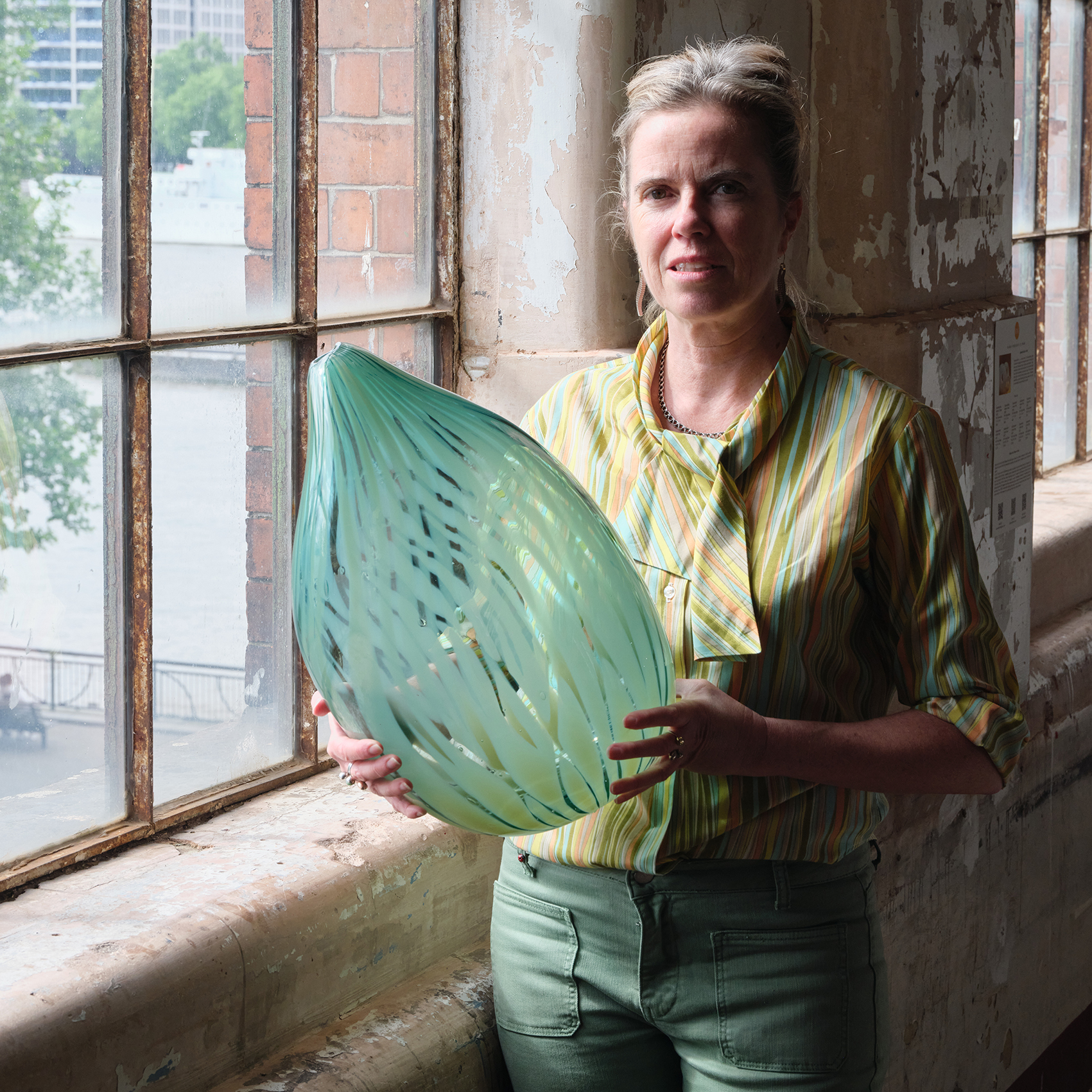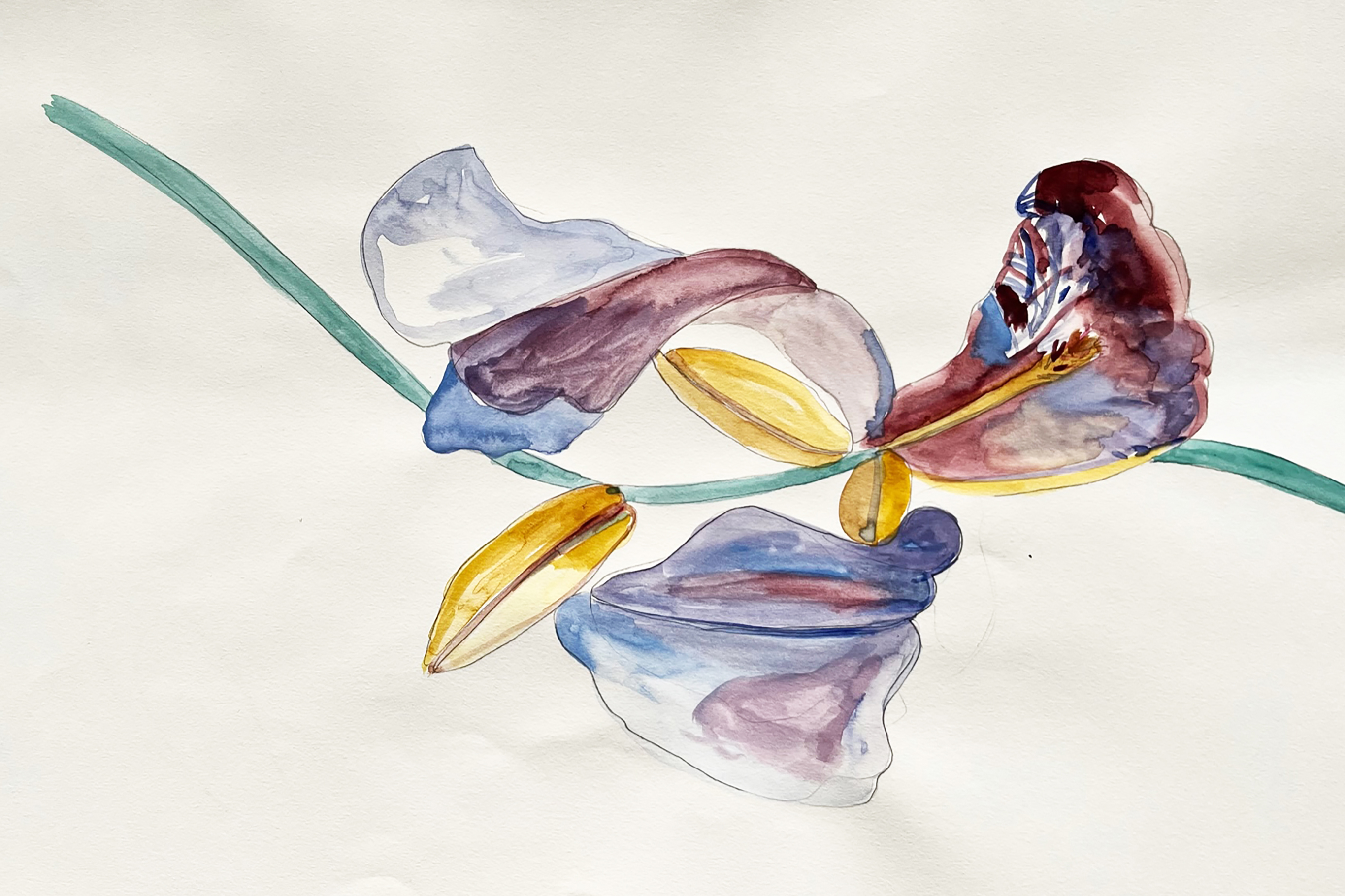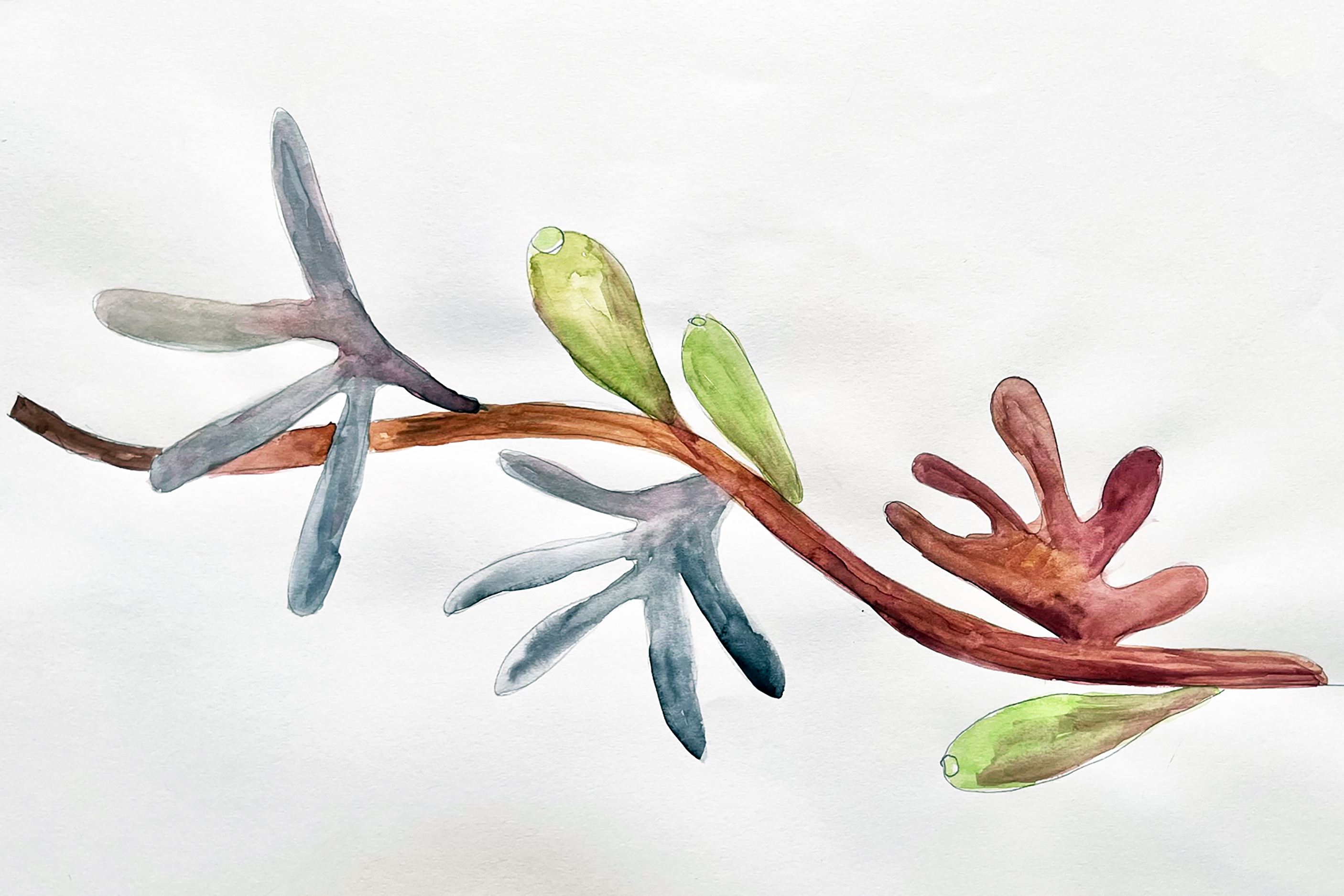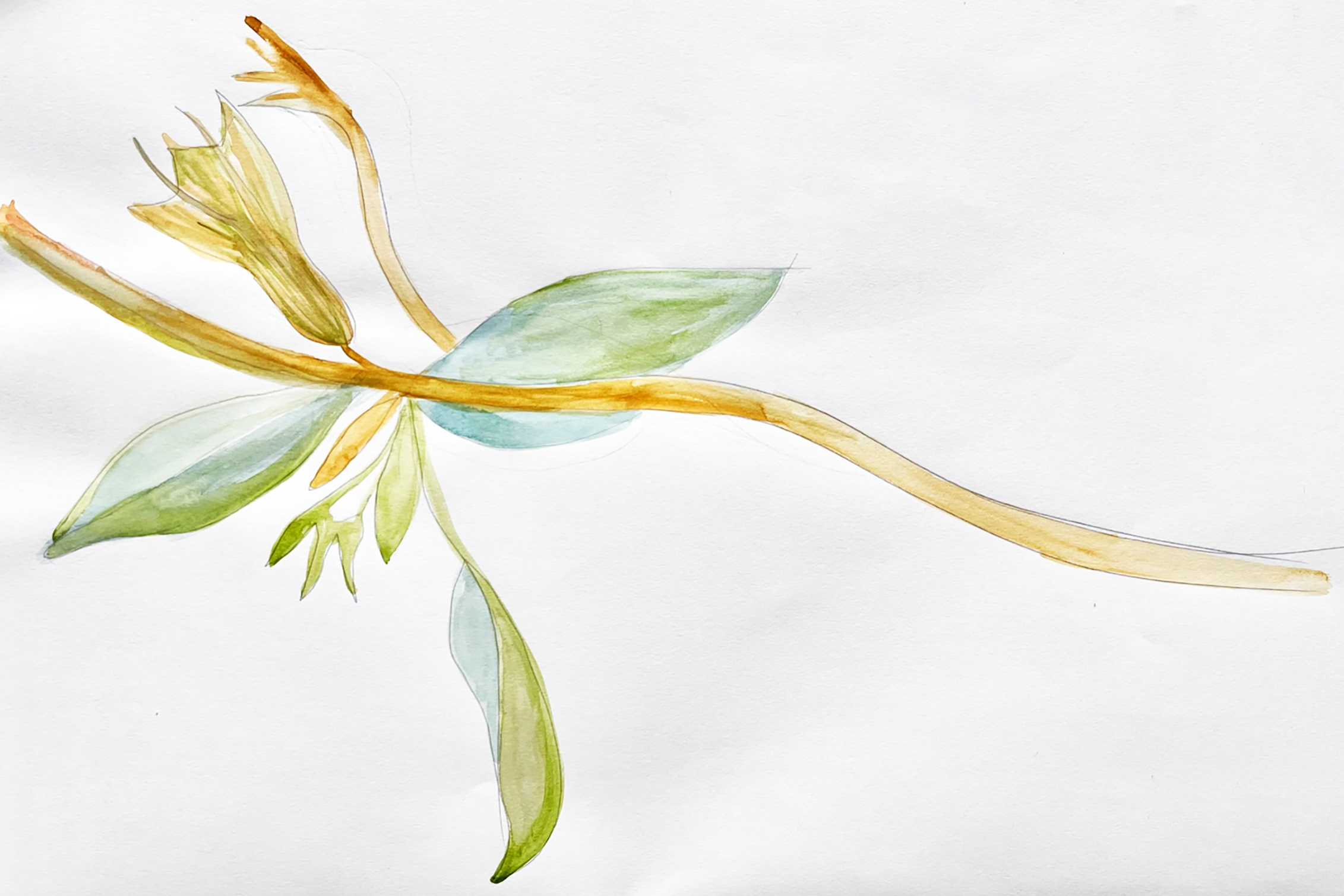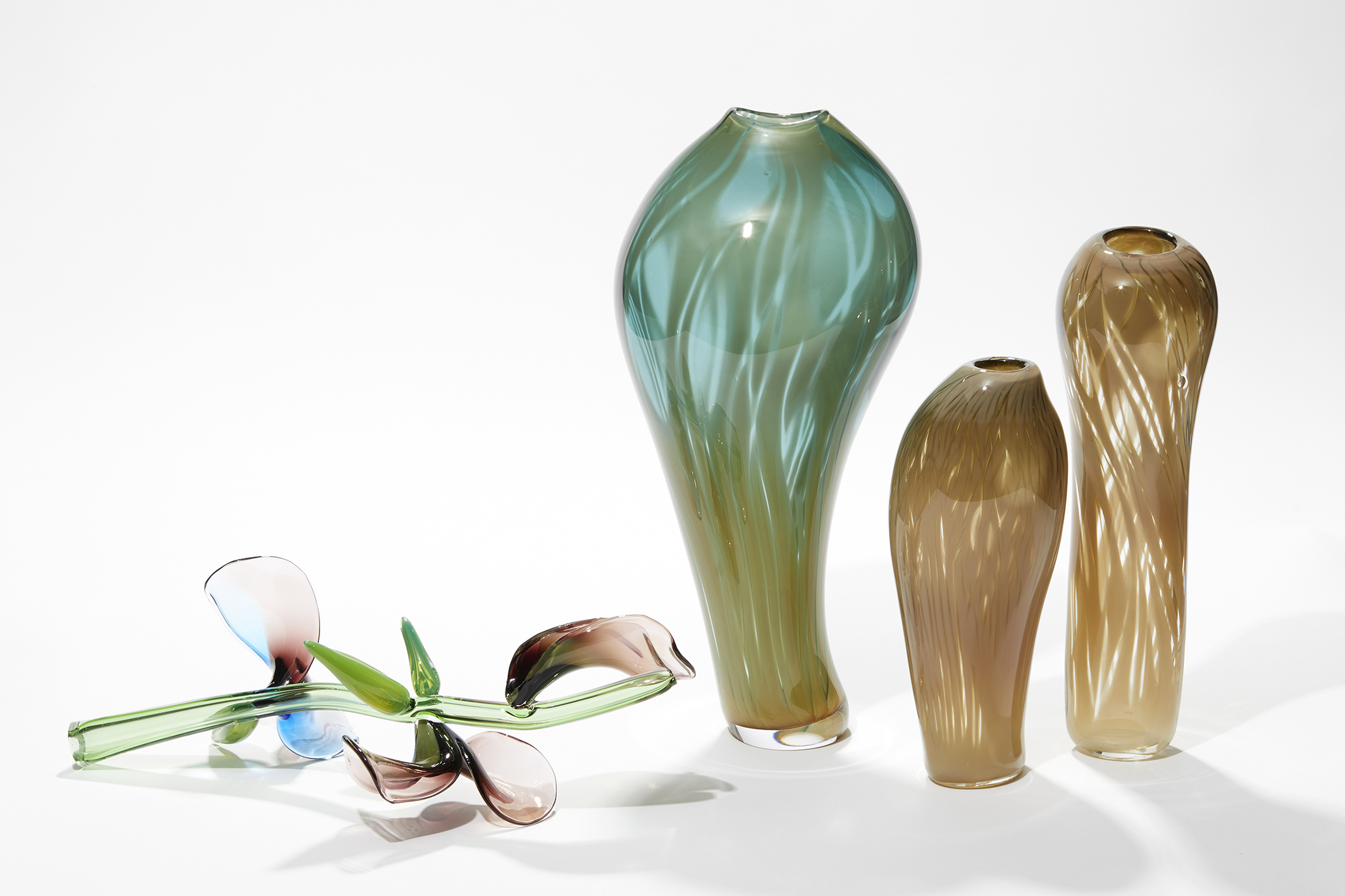Process and Inspiration | A film by Michèle Oberdieck
30th May 2023
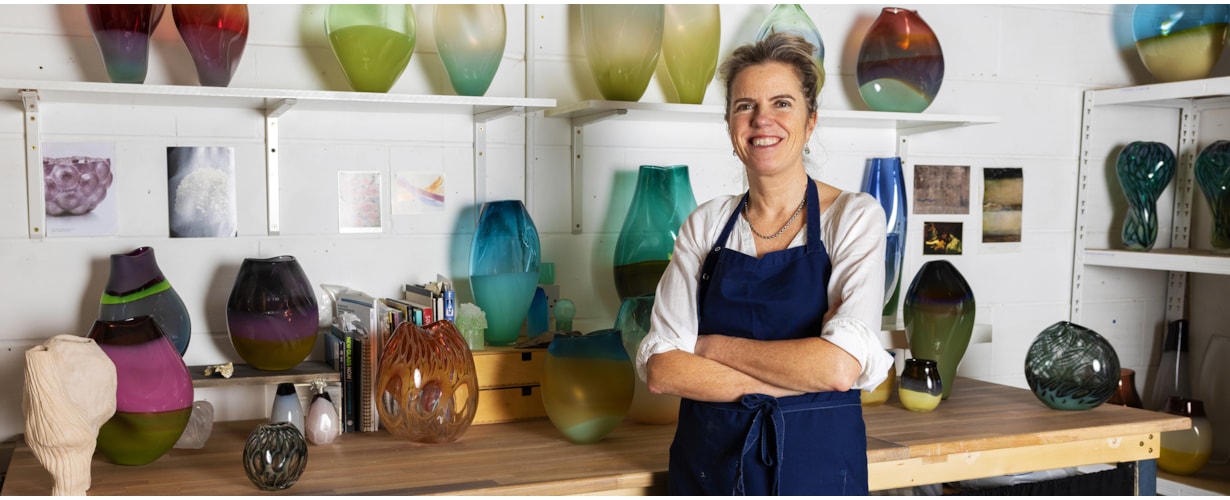
Process and Inspiration
A Film By
Michèle Oberdieck
Michèle Oberdieck explores balance and asymmetry through colour, form and surface decoration. Presenting her sculptural works as a gesture, an expressive mark, often composing individual elements together, she is fascinated in the narratives that can be created. Drawn to biomorphic structures found in plant growth, life cycles and decay, such as the delicately aging silhouettes of tulip petals, it is these twisted yet beautiful organic shapes, that she aims to capture in her glass.
With a background in printmaking and textiles, involving hand dying and screen-printing fine silks, Oberdieck understands the relationship between colour and light, a relationship that is perfect to further explore with glass.
As with many artists and their chosen medium, where there is an element of 'magic in the making', it is a real privilege to get a glimpse of the creative process and what is involved. Jack Webber from Eyes + Ears Film on collaborating for the film;
“As well as telling the story of how Michèle creates her beautiful asymmetrical forms, we wanted to capture the contrast between her studio, where ideas are conceived and the immediacy of the hot-shop where the hot glass is formed and shaped.”
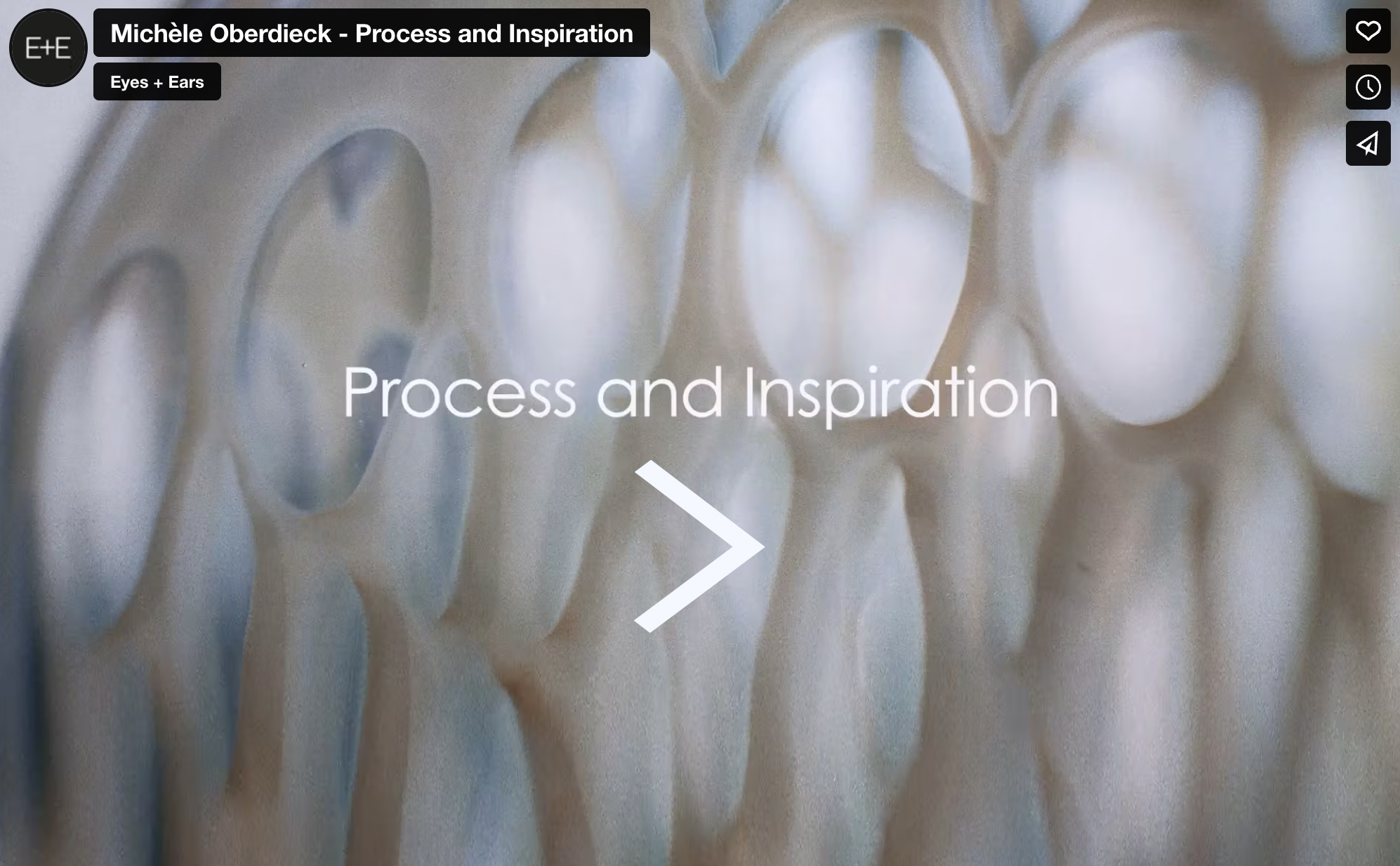
Special thanks to Sonja Klinger for her help & studio
Further Works By Michèle Oberdieck
Fantasy Plants A solo exhibition by Michèle Oberdieck
Further Insights
1 - Understanding Colour and Light
In the words of the artist;
“Unlike other materials where the colour is applied after the shape is made, with blown glass one starts with the colour. Supplied as glass rods which are cut down and heated in a small kiln, a series of tests are made first, to check how each molten hue moves. Glass pigments are achieved using metal oxides, each of which reacts differently to heat, as well as to one another, for example, opaque and transparent colours move at different speeds. Some are softer, becoming milky and more malleable, whilst other are harder remaining rigid, creating defining lines.
The length of heating time and the proportion of colour used is of particular importance and can impact on a piece dramatically, especially, as the shape blows out and the proportion of desired transparency is revealed. Essentially, colour and form evolve together.
The effect of differing sources of light on a glass object and the resultant shadows, both created internally or cast from it, constantly inspires me. Vivid, subtle, expressive - it is important how the tone works in balance with the shape. The size of the base affects the proportions of the piece, with the rim controlling the amount of light that is allowed to pass within."
Working on colour palettes
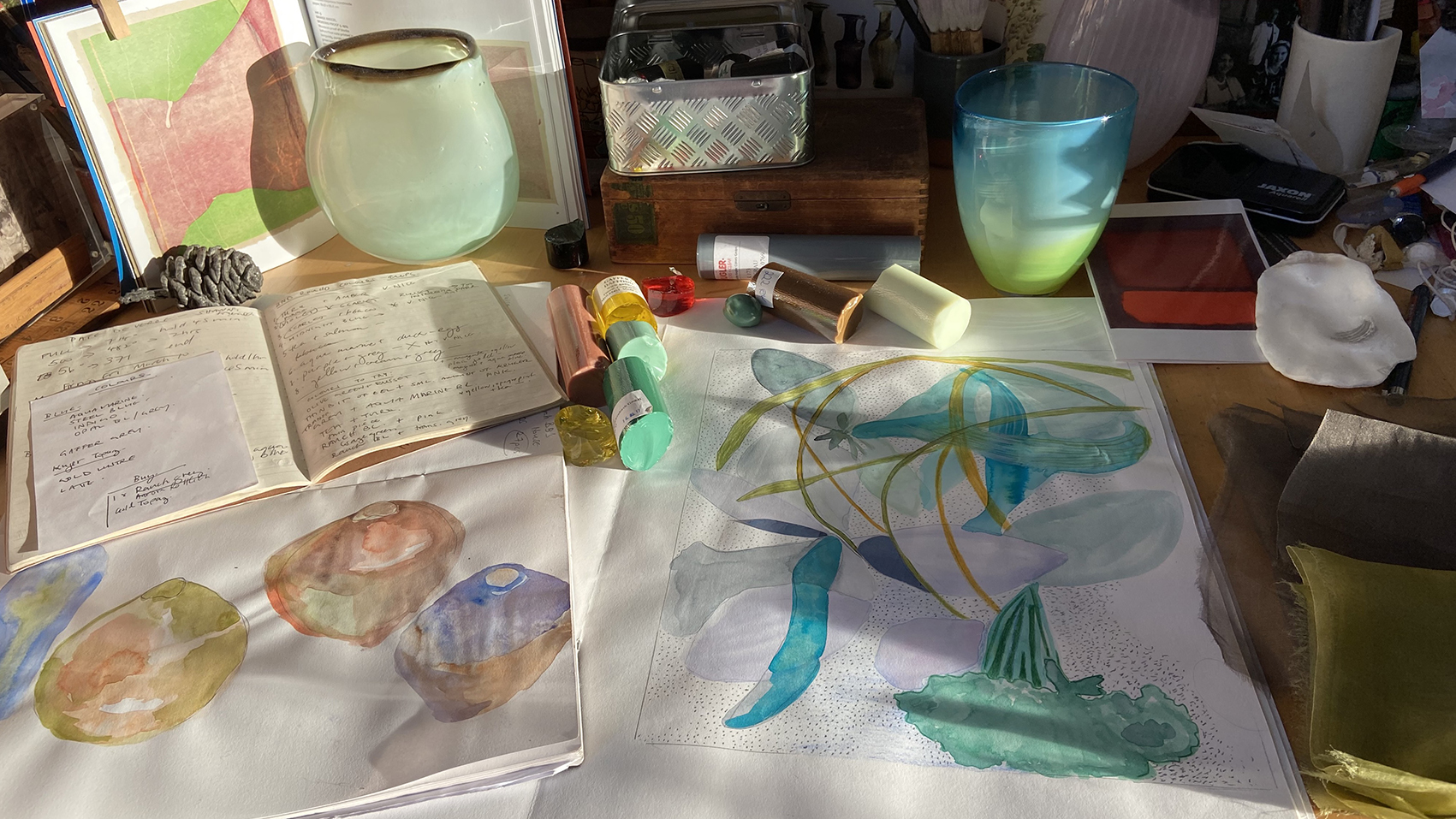
Choosing colours
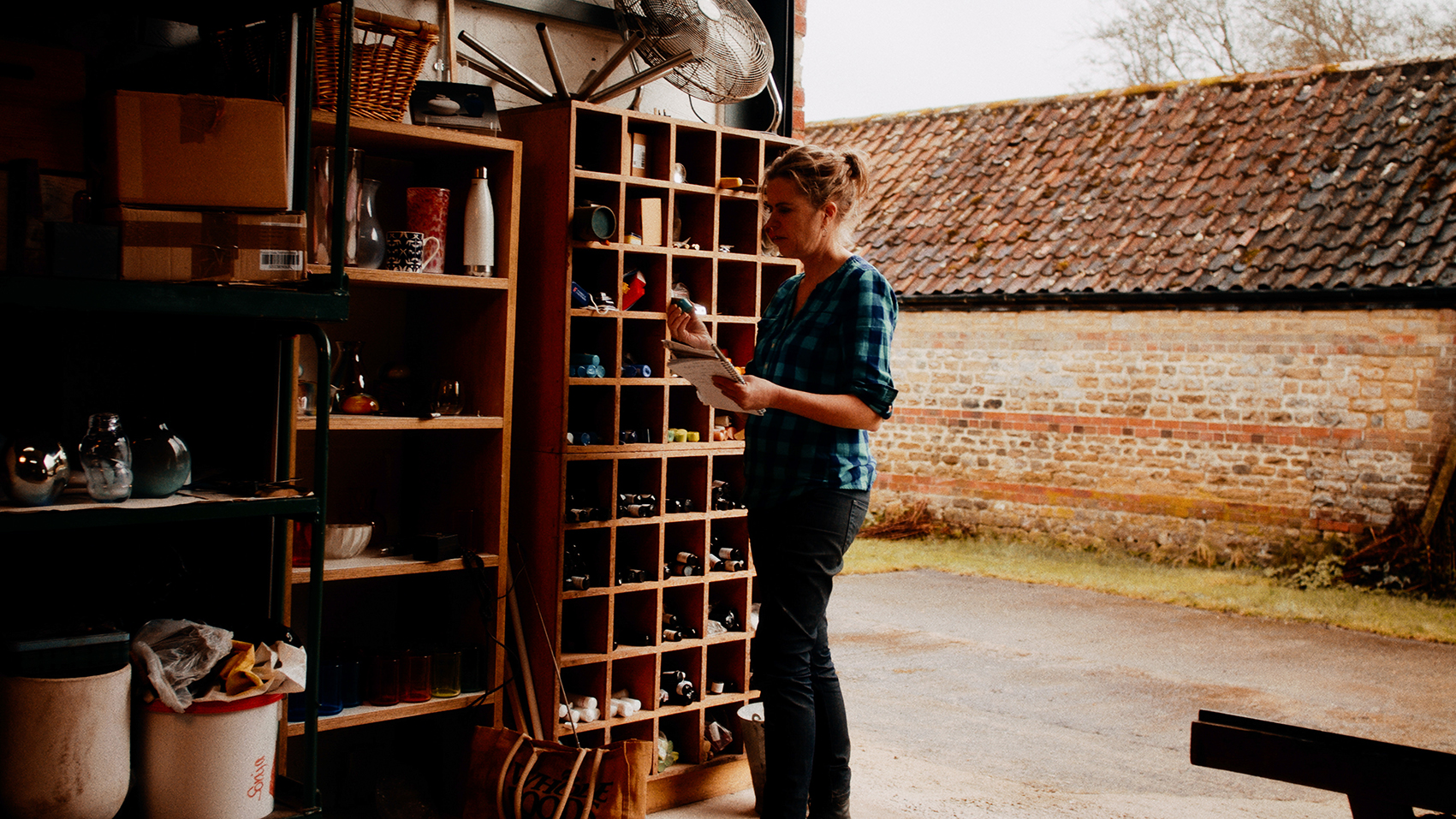
2 - Visualising Ideas
“The idea for a new piece can take many months to come to fruition, often remaining a concept in my head for much of that time. These ideas are then realised by sketching, painting and working out forms in clay, before any blowing commences.
Colour samples are thought out and created ahead of being in the hot-shop, where I am able to give the composition time and consideration, luxuries at this stage. There’s an immediacy to blown glass, it needs to be worked on quickly, hot glass cools in seconds and can crack if not heated right away, so planning ahead is crucial.”
Painting, sketching, maquette making & pre-planned colour combinations
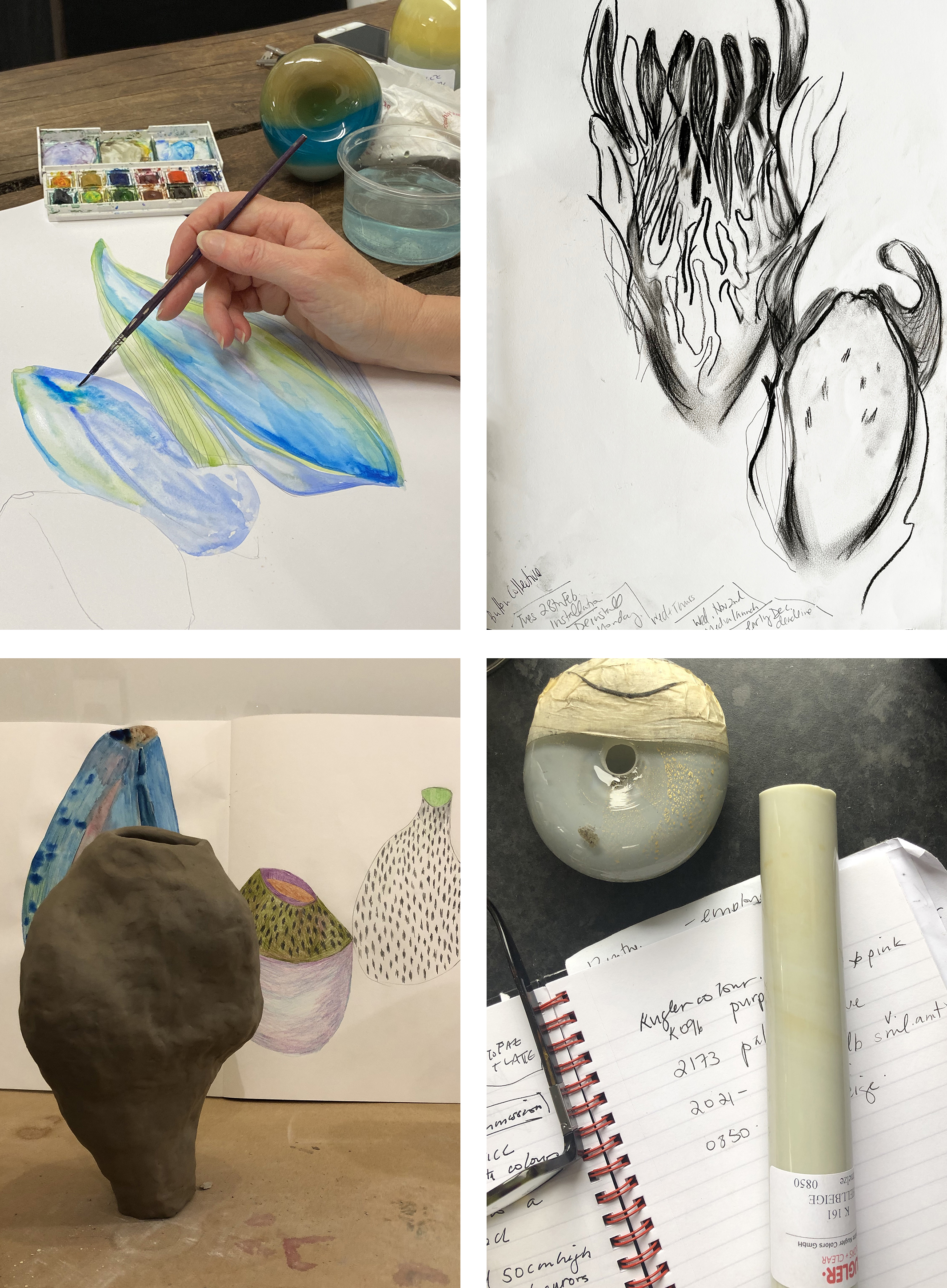
3 - In The Studio
“Each piece is mouth blown and shaped by hand whilst hot. No moulds are used. Although new artworks can be made, repeating a colour combination and desired form, there will always be differences, unique characteristics, from one vessel or sculpture to another.”
The artist in action
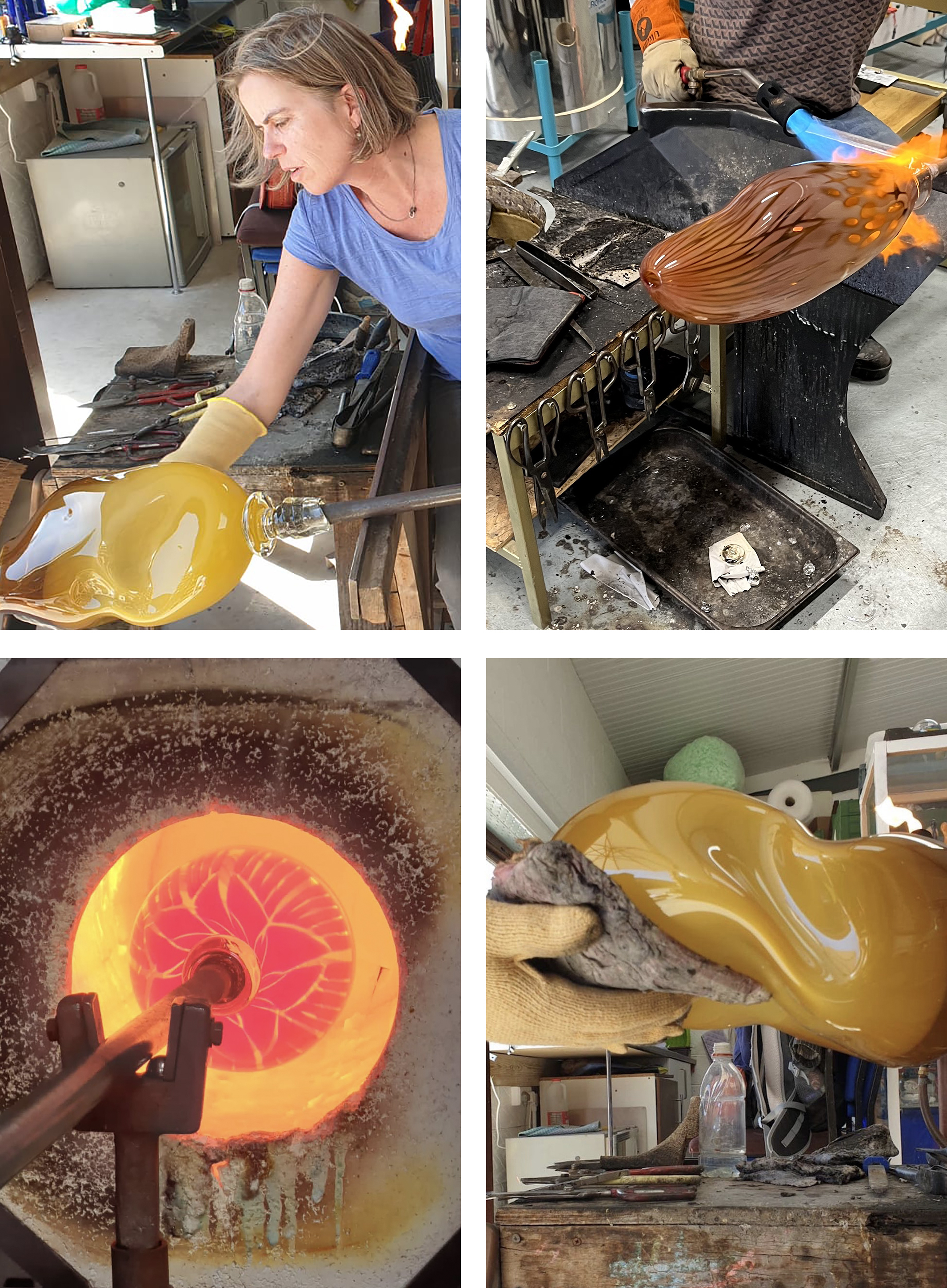
4 - Graal: Cutting Through Colour
“During my MA I developed my own technique of working with the classic Swedish technique, GraaI, originally developed by Orrefors of Sweden in 1916. I 'draw' patterns and designs with diamond engraving wheels, cutting through an overlay of coloured glass, that has already been blown and cooled in the form of a small egg or cup. These cups are then reheated up overnight and blown into the finished artworks, as they evolve and increase in volume during the making, these incised marks blend, soften, stretch and distort, creating ethereal watery effects, becoming smooth and integral to final shape and its surface.
My aim is to allow as much light into these pieces by cutting away the opaque coloured glass, making them more fluid, light filled and permeable. I find the contained interior space intriguing, how the inner reflection of light and shadow affects the exterior form, as well as the effect of light being diffused through the feathery lines and motifs.”
Oberdieck 'drawing' her patterns, eggs / cups ready for reheating

Incised lines are heated, stretched and softened
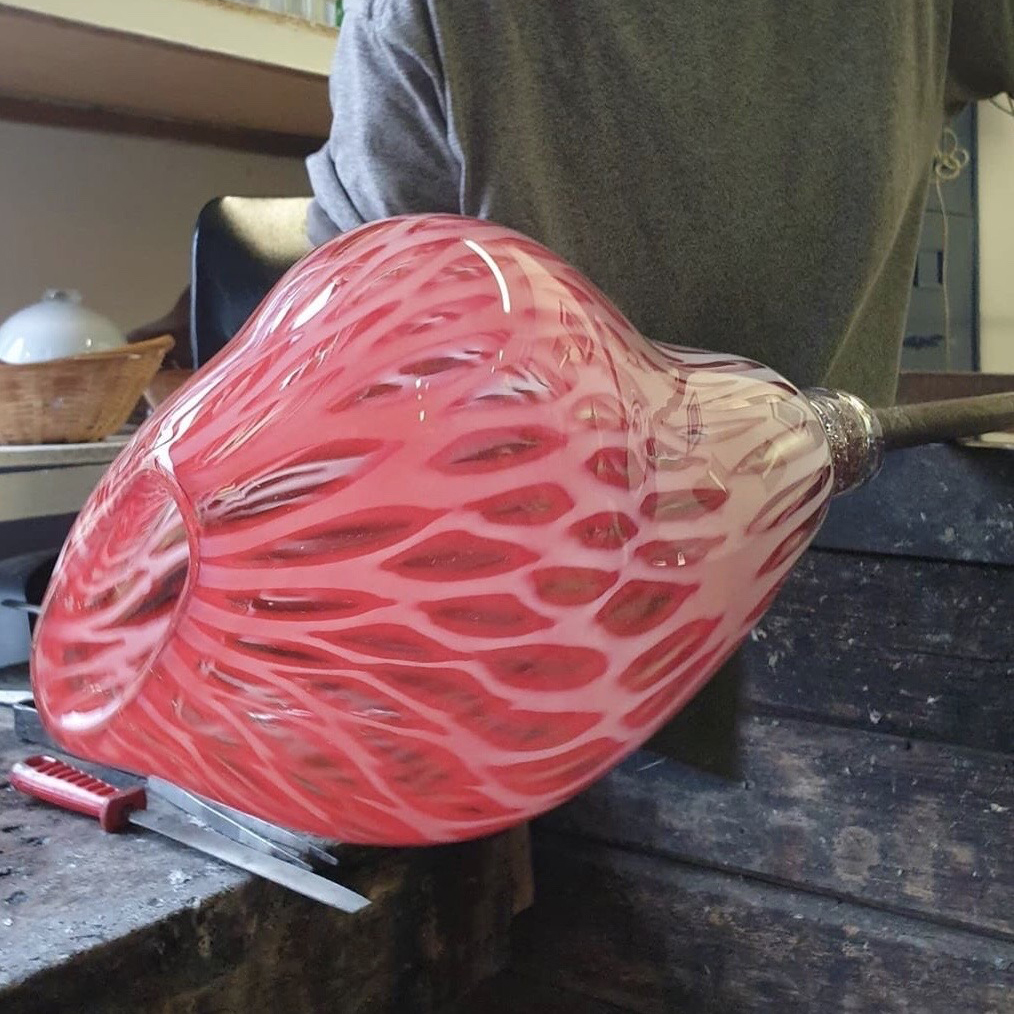
Finished Unique Artworks
Tulip Bud H 21 cm W 23 cm D 18 cm
Papavero Nero H 39 cm W 31 cm D 19 cm
Papaver Aglaja H 37 cm W 29 cm D 22 cm
Kokia H 15 cm W 45 cm D 20 cm
Knot Wrack H 46 cm W 22 cm D 19 cm
Cotinus II H 30 cm W 13 cm D 11 cm
Plum H 44 cm W 34 cm D 19 cm
Golden Hibiscus H 53 cm W 18 cm D 15 cm
About The Artist
Michèle Oberdieck has been working with blown glass since her MA at the Royal College of Art in 2016. This shift of material was the result of a significant commission involving the development of a new technique of fusing printed fabrics between sheets of glass. A moment that sparked curiosity in this new medium, paving the way for a new creative direction. Previously Oberdieck studied textile design at Glasgow School of Art and ran a successful printed textile practice for several years based at the Oxo Tower, London.
She has exhibited and sold work in Italy, France, Japan, Lebanon, USA, South Korea, Canada, as well as in the UK. Her work was selected for the European Prize for Applied Art Exhibition 2022 in Belgium, as well as the Ireland Glass Biennale 2019, being one of just 50 international artists on show. For the last three years she been invited to exhibit at Venice Glass Week. In March 2023, she was chosen as just one of only 14 artists by the Crafts Council to exhibit at Collect Open, held at the prestigious Somerset House. Most recently, Oberdieck was awarded the QEST (Queen Elizabeth Scholarship Trust) grant in 2023, allowing continued training in blown and sculpted glass.
![]()
She has exhibited and sold work in Italy, France, Japan, Lebanon, USA, South Korea, Canada, as well as in the UK. Her work was selected for the European Prize for Applied Art Exhibition 2022 in Belgium, as well as the Ireland Glass Biennale 2019, being one of just 50 international artists on show. For the last three years she been invited to exhibit at Venice Glass Week. In March 2023, she was chosen as just one of only 14 artists by the Crafts Council to exhibit at Collect Open, held at the prestigious Somerset House. Most recently, Oberdieck was awarded the QEST (Queen Elizabeth Scholarship Trust) grant in 2023, allowing continued training in blown and sculpted glass.
